Here at Gaming Reinvented, we love reading game developer interviews of all kinds. Whether it’s the ones we conduct ourselves or those on third party sites like Famitsu and Nintendo Life, it’s always interesting to see what goes into a game and how various design decisions are made throughout it’s development.
And that’s especially true of the Mario RPGs. So, when we learnt that there was a new interview about Mario & Luigi: Brothership, we just knew we had to cover it immediately.
Posted by Nintendo Dream, this one is with a mix of Nintendo and Acquire employees, and covers everything from enemy design to story writing in the most interesting way possible.
With the first point of interest being about character design. Why? Because as it turns out, Connie was actually the first ever character created for Mario & Luigi: Brothership!
Yep, as revealed by Bridge in the interview, Furuta created Connie, with the latter being the first character designed for the game. As you can probably guess, her design was inspired by electrical outlets and their resemblance to faces, with the rest of Concordia’s population designed along similar principles.
They also mentioned something interesting about the antagonists too. That being, how many of them seem to resemble plugs and connecters rather than outlets and sockets. In theory, that seems like an interesting theme to have, and one which you’d think would be part of the design process.
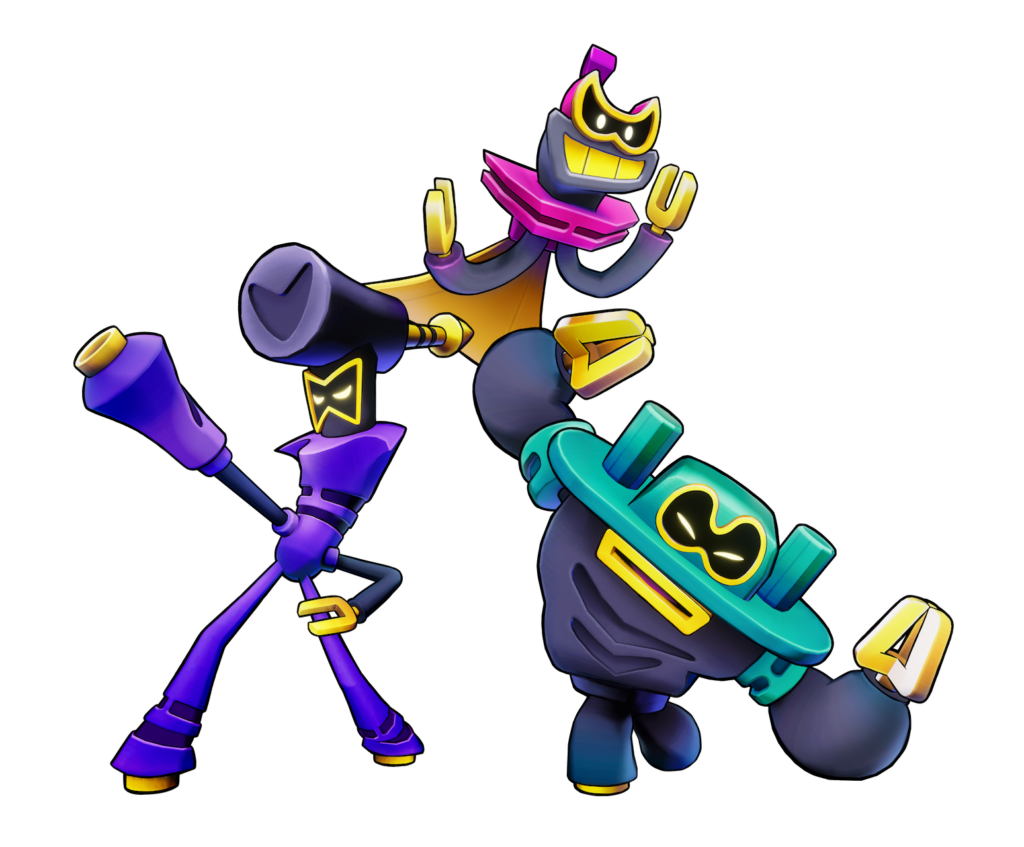
The Extension Corps were not necessarily designed to be plugs to contrast with other characters being sockets
But no, that’s not the case. Instead, it’s all just a coincidence and the villains weren’t designed specifically after cables and plugs at all. Instead, things merely worked out that way because it was easier to give outlet like creatures facial expressions (which were more important for friendly characters) and easier to give plug/socket like characters weapons or attacks. So, there’s no reason that the Extension Corps aren’t sockets like the other Concordians. It’s just a byproduct of their design following Nintendo’s form after function philosophy.
Speaking of the Corps, they also explained what they’re based on too. Apparently, Ecks is based on a LAN cable, Ten is based on a phone plug, and Shun is based on a DVI cable. They even include a photo comparison for good measure!
There’s also a neat detail about Peach’s character design too. Want to know why Peach joins IDLE in this game?
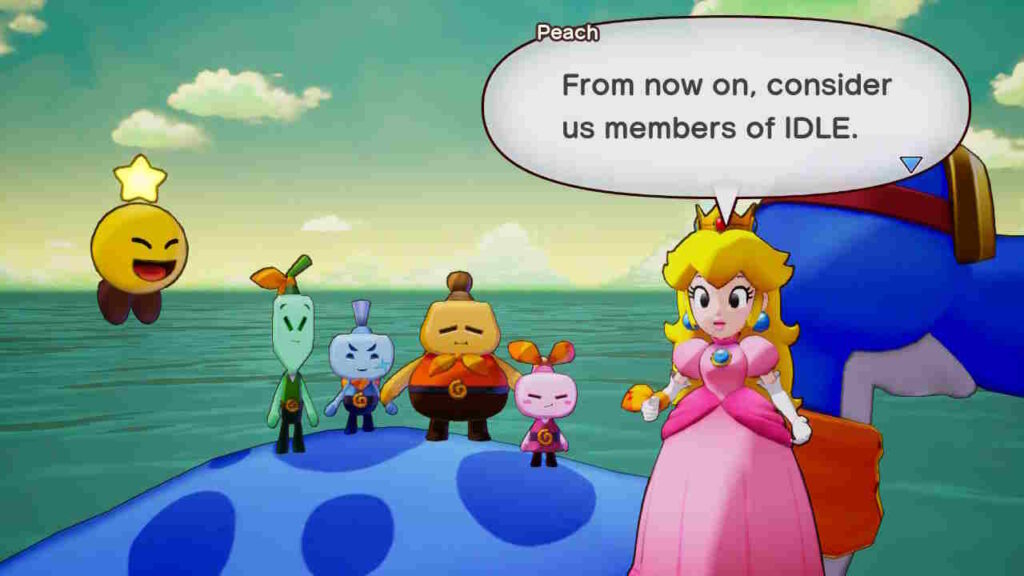
Peach joins IDLE in Mario & Luigi: Brothership
Well, as it turns out, it’s because the designers wanted Peach to wear a new costume. However, unlike in Princess Peach Showtime, there was no plot related reason to justify that, and Nintendo were hesitant to just let Acquire redesign the character.
So they made her join IDLE so she could wear a scarf. Yes really.
Moving on from characters, there are also a few details about how the game’s Bros Attacks came to be. Basically, Otani wanted Bomb Derby to return, so asked Acquire to add that…
Then the team at Acquire chose 5 returning attacks and 5 new attacks to include, and went with those. It’s a logical setup, though we do admit that it feels a bit too safe at times. Like Acquire could have maybe pushed the boat out a bit more with the selection here, and added a more original ones instead.
Still, they do mention one neat design detail about Bros Attacks here. That being, they’re designed to be understandable from Mario and Luigi’s alone, rather than any sort of special UI.
And it makes perfect sense really. Mario and Luigi games have always been very animation driven at heart, and a big part of that is how natural all the attacks and counters feel to use. You never have to grapple with action commands that don’t match the action on screen, and it’s a lot more fluid as a result of that.
So yeah, kudos to Acquire for continuing the trend with Brothership. It’s always best when a game is easy to understand via the on screen action alone.
Of course, Bros and Bros Attacks aren’t the only things that get design discussions here. No, there’s also some discussion about enemy designs too.
And as it turns out, they’re surprisingly flexible in how those end up being designed. Cause you see, while some definitely follow the Nintendo philosophy of function before form…
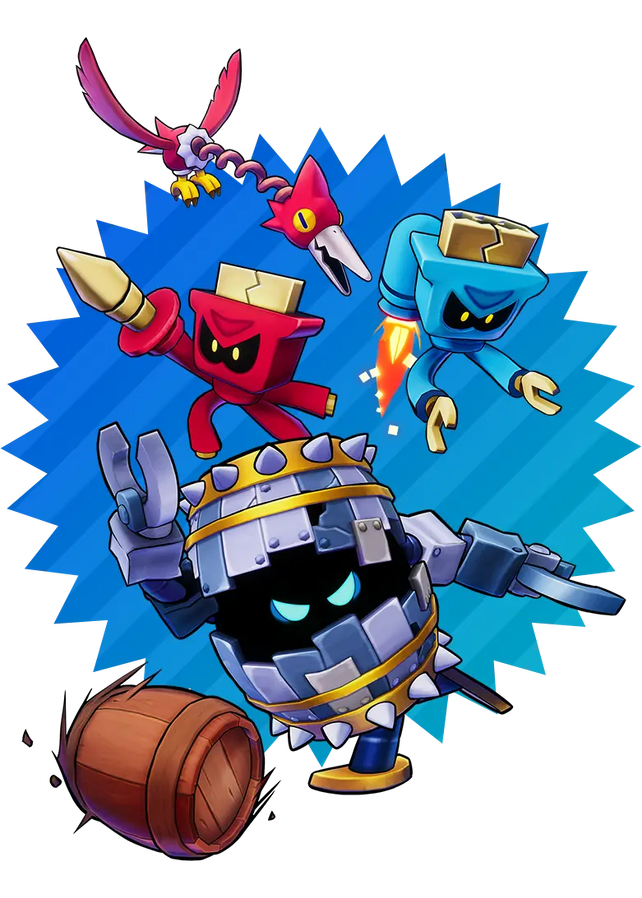
The Zok Troops were clearly designed based on their abilities
There are also apparently plenty of enemies whose designs were created before their movesets, and others who saw said designs tweaked after the movesets were locked in.
So yeah, it’s a bit more open-ended than the platformers are, that’s for sure.
Another thing they touch on is Luigi Logic. Or more precisely, why it exists at all.
Yeah, you can probably guess this. Basically, the addition of Luigi’s AI meant that the player’s role in controlling him was reduced compared to previous instalments, and the team wanted him to be as important to the game as ever.
So instead of making him solely controllable with the B button on the overworld again, they came up with the Luigi Logic system. He can do things on the overworld independently to give him more of a purpose in the game.
It’s a neat system, though we definitely feel like making him directly controlled again might have been the better move. Indeed, Otani was even against the idea of Luigi moving automatically at first, so there’s a good chance we could have gotten traditional Luigi movement had he held firm with his beliefs:
Otani: Actually, I was against it at first. Not using the A and B buttons would not be Mario & Luigi RPG. But it seems to have been well received, so I’m relieved.
The interview also touches on the darker storyline too. Indeed, as anyone who’s played the game knows all too well, Brothership might well be the darkest game in the series, or even Mario franchise in general. It’s got a surprisingly foreboding endgame we won’t spoil here, some horrific actions against characters you’d think would be left unharmed, and a couple of main villains that might be some of the evillest in any Nintendo game.
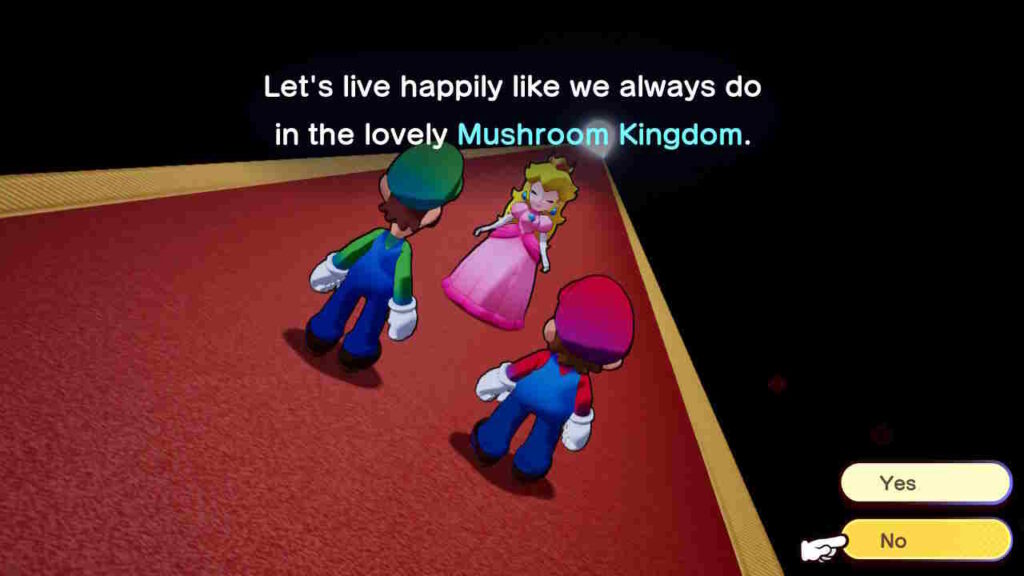
Like this scene in the game…
And there’s apparently a good reason for that. Put simply, the Mario movie meant a more dramatic direction was apparently seen as more ‘normal’/acceptable now, and the folks at Nintendo wanted something a bit darker and scarier to reflect that:
Otani: Ohashi-san asked me if he wanted to make the story a little more adult-oriented, and that may have been the trigger.
The past series depicted a somewhat laid-back world, but in recent years, Mario movies have been released, and it would not be strange to expect a dramatic development.
It’s certainly an interesting justification, though we question how necessary it is to begin with. The series has already had its darker elements, and previous RPGs have been no slouch in the villainy department. See the Shroobs and their invasion in Mario & Luigi: Partners in Time, anything related to the main story or Dimentio’s actions in Super Paper Mario, or many of the horrors found in the likes of Mario & Luigi: Bowser’s Inside, Mario & Luigi: Dream Team or Paper Mario: The Origami King.
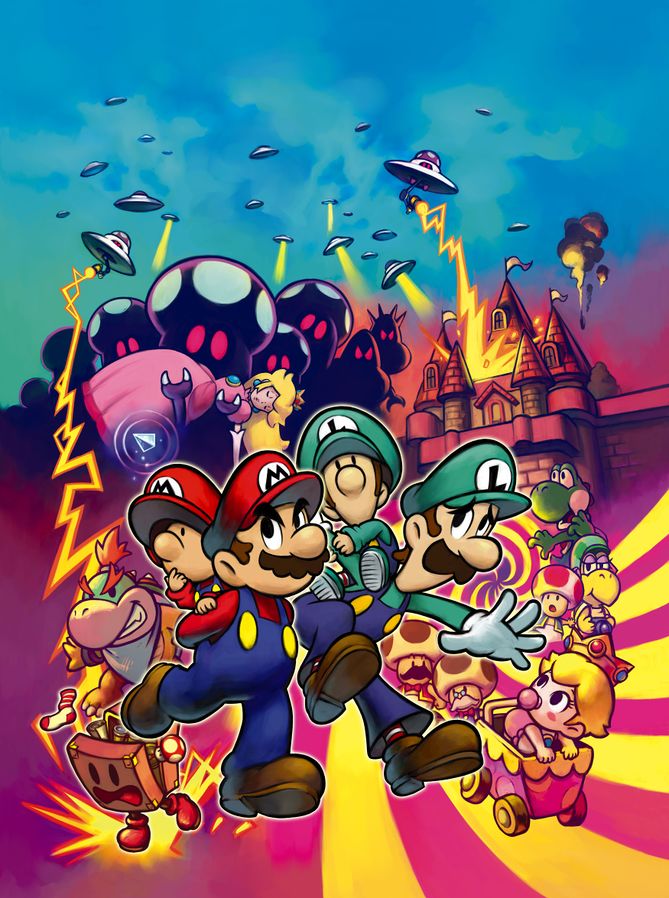
Ah well, it gave us the most messed up psychopath in the entire series, so who’s complaining?
Speaking of said character, the design team are really careful not to give away too much about them in the interview. As seen in this incredible line:
Furuta: I added smiling eyes to “a certain thing,” and I thought it was good that it looked even scarier even though it wasn’t scary.
Yeah, I suspect we all know what that ‘certain thing’ happens to be.
Regardless, there’s also some info on the game’s name too. And more interestingly on a name that could have been:
Otani: Actually, at the beginning, I wanted to add Wonder. Like “Mario & Luigi RPG Wonder”. But while we were making it, “Super Mario Bros. Wonder” came out first, so we couldn’t use it (laughs).
Yeah, they considered calling the game Mario & Luigi: Wonder, until Super Mario Bros Wonder shot down those plans. Makes us imagine how funny it would have been had things been the other way around. Would Nintendo have renamed Super Mario Bros Wonder to avoid people confusing it with a Mario & Luigi game? Would people assume Mario & Luigi: Wonder was a Super Mario Bros Wonder spinoff? It’s impossible to know…
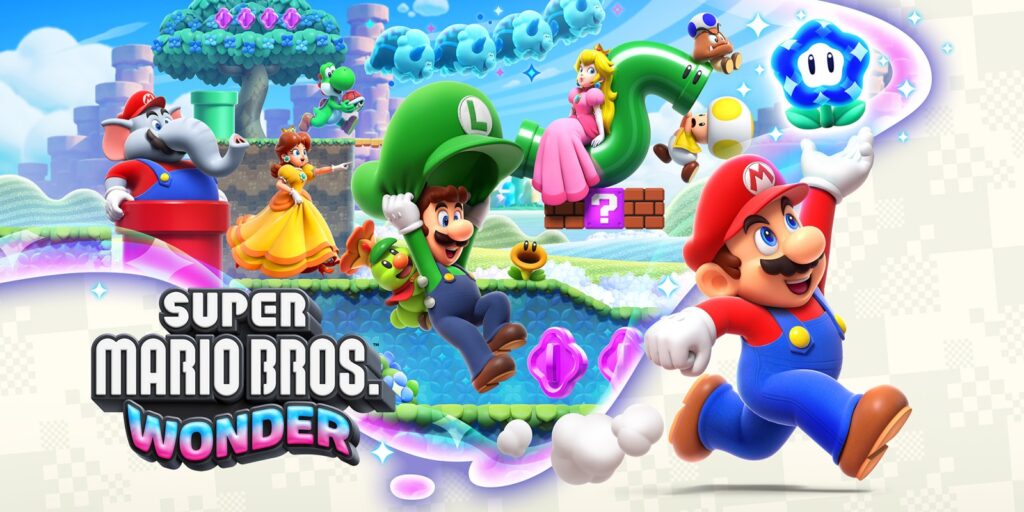
Super Mario Bros Wonder necessitated a name change for Brothership
Finally, the designers name some of their favourite locations as well. And while these seem rather minor, they actually reveal a few other neat details about the game’s development history.
Most notably, that Jellyfish Island was actually one of the first islands created. That’s rather interesting given it’s explored so late in the story, and has such a minor role in the plot overall.
But it makes a surprisingly amount of sense if you examine the game’s script. Lots of NPCs reference Jellyfish Island and Jellyfish Hall/Club Dyode long before you ever reach it, so perhaps that was thrown in early in the writing process.
Regardless, the creator’s favourite islands and reefs are as follows:
| Designer Name | Island Name | Reef Name |
|---|---|---|
| Otani | Jellyfish Island | Mysterious Swirled Reef |
| Bridge | Skorcheen Island | Tumbling-Tower Reef |
| Freddy | Twistee Island | Princely Reef |
| Furuta | Desolatt Island, Lottacoins Island | Feathered-Family Reef |
While their favourite Bros Attacks and actions are these ones:
| Designer Name | Bros Attack | Overworld Ability |
|---|---|---|
| Otani | Hatch Me If You Can | Bros Bomb |
| Bridge | Clockout Blow | N/A |
| Freddy | Bomb Derby | N/A |
| Furuta | Jump Helmet | UFO Spin |
So yeah, those are some of the interesting details revealed in this article. From an early name for the game, to how the Concordian people were designed as characters, there’s a lot of neat stuff there for any Mario & Luigi fans.
Definitely check it out over on the Nintendo Dream site if you’re interested…
And tell us what you think of the game and this info in the comments below, on social media, or on our Discord server today!
Nintendo x Acquire: A development interview for Mario & Luigi: Brothership (Nintendo Dream)